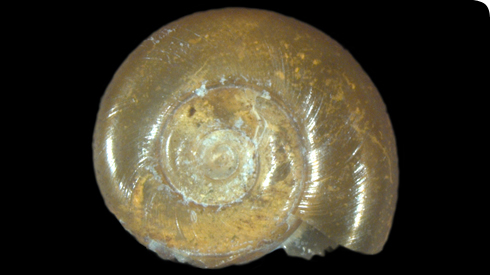Lookalikes
B. choanomphala was placed in a group of other Biomphalaria snails based on morphological characters such as size and shell shape.
These other snails:
- inhabit large lakes adjacent to Lake Victoria:
- B. stanleyi is mainly found in Lake Albert
- B. smithi is endemic to Lake Edward
- have a similar habitat preference to B. choanomphala
- are considered vectors of intestinal schistosomiasis. B. stanleyi has been described as the most important vector in Lake Albert.
These traits demonstrate how early taxonomists believed these 3 species to be closely related. They:
- look similar
- behave in similar ways
- fill a similar role in parasite transmission in their respective lakes
However, molecular evidence has shown that:
- none of the 3 are particularly closely related
- B. choanomphala is more closely related to B. sudanica, with which it shares Lake Victoria
Genetic lookalikes
Although B. choanomphala and B. sudanica look different, we should consider them to be 'lookalikes' in a genetic sense as they are very hard to distinguish, even using multiple genetic markers.
So what separates them?
- They tend to be found in different habitats:
- B. choanomphala tends to be found in clear, fairly still water within a lake or large pond.
- B. sudanica is often found in marshes and muddy ponds on the edge of the lake. It can thrive in very murky water which is usually even less turbulent than where B. choanomphala is found.
- B. sudanica is traditionally less implicated in the transmission of schistosomiasis than B. choanomphala (which is thought to be the main transmissive agent in Lake Victoria). However, researchers at the Natural History Museum are beginning to question this as:
- B. sudanica has been shown to be very capable of transmitting schistosomes under laboratory conditions
- infected individuals have been found in the wild
Implications for schistosomiasis transmission
Given the genetic similarity between B. choanomphala and B. sudanica, it is possible that their shell shape differences are more to do with developing in particular habitats than actually being true separate species.
If this is the case, then B. sudanica should be considered as capable a host as B. choanomphala and local people around Lake Victoria need to be made aware that marshy fringes to the lake are just as dangerous for catching schistosomiasis as the lake itself.
